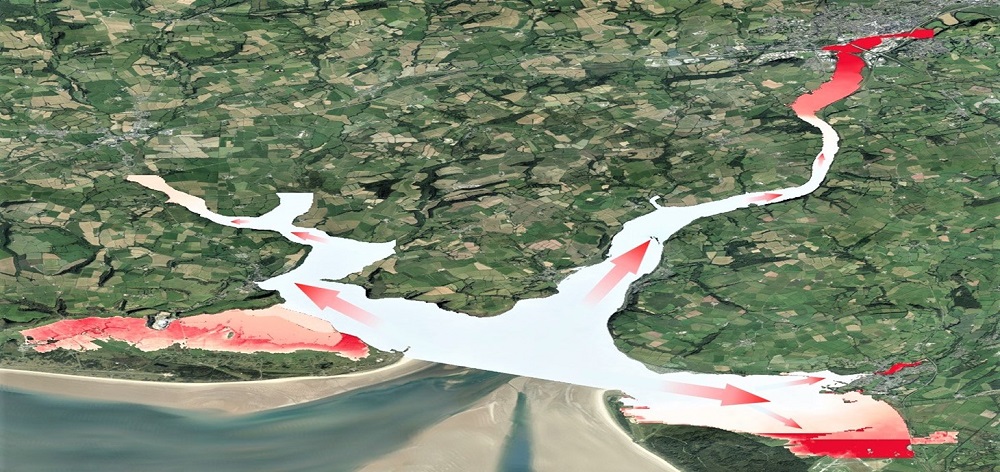
Three Rivers estuary, south Wales: red areas indicate large reductions in water level where marsh is present, and blue-white where little to no effect was observed, showing that the presence of marsh vegetation has the greatest flood protective effect for towns and infrastructure in upstream areas.
Coastal wetlands – such as salt marshes - provide even more flood protection than previously thought, reducing the risk to lives and homes in estuaries, a new study has revealed.
The researchers’ simulations showed that wetlands that grow in estuaries, such as salt marshes, can reduce water levels by up to 2 metres and provide protection far inland up estuary channels.
This subsequently saved up to $38 (£27) million in avoided flood damage costs per estuary during a large storm thanks to the wetlands’ role in preventing storm floods.
The research is timely as wetlands are facing growing threats from continued urban development. 22 of the largest 32 cities in the world – including London, New York and Tokyo - are built on low-lying land around estuaries, which puts them at increasing risk of flooding in a warming climate. At the same time climate change is driving increases in the magnitude and frequency of storms, and sea level rise.
The flood prevention role of coastal wetlands, which are common throughout Wales – the focus of this study - as well as the rest of the world, is therefore vital.
Previous research has focused on wetlands along open coastlines, where the plants absorb wave energy and stop waves pushing inland. However, the new study focuses on estuarine environments, including looking at what happens in upstream estuary areas where waves tend to be much smaller.
Taking this fuller picture into account, the researchers demonstrate that wetlands can have a much bigger storm flood prevention role because they not only absorb wave energy, but simultaneously reduce storm surges as they move up estuary channels.
This happens because the marshes along the estuary edges cause drag or friction, slowing down surges of water caused by storms, and protecting vulnerable upstream areas from flooding.
The research team included experts from Swansea University, with colleagues from the universities of Bangor and Exeter, Plymouth Marine Laboratory and from CSIRO in Tasmania.
The team used hydrodynamic models of eight estuaries of very different size and character in various parts of Wales. They simulated storms of different strengths and modelled the damage they would be likely to cause.
They found that coastal wetlands:
- Reduced flooding across all eight estuaries in the study
- Lowered storm water levels by as much as 2 metres in upstream areas
- Made the biggest difference when faced with the most powerful storms – reducing average flood extents by 35% and damages caused by 37% ($8.4M).
Lead researcher Dr Tom Fairchild of Swansea University said:
"Our study shows that coastal wetlands play a crucial role in reducing storm-driven flooding in estuaries. They are nature’s flood defences and we need them now more than ever.
Until now, the role of wetlands for coastal defence has been undervalued because of the focus on open coasts. Traditionally, estuaries -where waves tend to be much smaller – have been assumed to be less important, despite containing extensive wetland areas. Our research challenges that idea, showing that focussing on single processes, or even coastal environments, may risk grossly underestimating the true value of our wetlands".
Dr John Griffin, co-author of the study and also from Swansea University, added:
"Our work shows that when big storms hit, nature works extra hard for us, preventing or reducing coastal flooding… for free. The upshot is, by protecting and restoring coastal wetlands, we help protect ourselves from the growing threat of flooding. It’s a no-brainer."
The research was published in Environmental Research Letters.
Sustainable futures, energy and the environment - Swansea research
